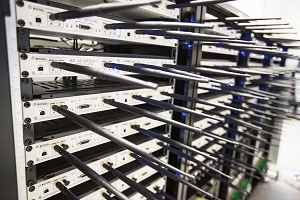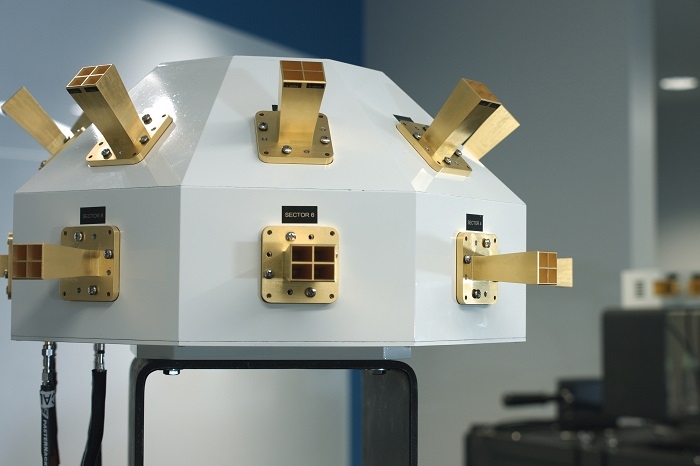
In this interview, Raghunandan N V who is a Technical Marketing Engineer with National Instruments talks about 5G. As a part of his role, he is involved in supporting, consulting and teaching customers from various industries & academia. His focus areas include Software Defined Radios, Embedded Systems, Automated Test & Wireless Test.
How is Massive MIMO’s technology being considered as one of technologies for inclusion in the 5G specifications?
 Massive MIMO is one of the candidate technologies being considered for inclusion in the 5G specifications and has shown real progress in the lab. For those not familiar with the concept, Massive MIMO takes MIMO to an extreme using hundreds of antennas at the base station utilizing full spatial multiplexing - multiple data streams are transmitted at the same time using the same frequency. Ideally, base stations could be constructed with hundreds of low-cost antennas rather than the sectored high power remote radio heads widely used today to enhance coverage, improve power efficiency and attain higher spectral efficiency. Last year, researchers at the University of Bristol in the UK and Lund University in Sweden demonstrated a 128 antenna Massive MIMO base station prototype (128 receive and 128 transmit antennas) to produce an astounding 146 b/s/Hz spectrum efficiency mark in just 20 MHz of spectrum. British Telecom (BT), the largest provider of telecommunications services in the UK, took note of this work and reached out to Professors Mark Beach and Andrew Nix at Bristol to test their Massive MIMO prototype in more demanding environments. Instead of a controlled lab, BT sought to test the system in a variety of different scenarios including both indoor and outdoor settings. The Bristol team took their system on the road to BT’s Adastral Park campus where the initial experiments were staged in a large exhibition hall.
Massive MIMO is one of the candidate technologies being considered for inclusion in the 5G specifications and has shown real progress in the lab. For those not familiar with the concept, Massive MIMO takes MIMO to an extreme using hundreds of antennas at the base station utilizing full spatial multiplexing - multiple data streams are transmitted at the same time using the same frequency. Ideally, base stations could be constructed with hundreds of low-cost antennas rather than the sectored high power remote radio heads widely used today to enhance coverage, improve power efficiency and attain higher spectral efficiency. Last year, researchers at the University of Bristol in the UK and Lund University in Sweden demonstrated a 128 antenna Massive MIMO base station prototype (128 receive and 128 transmit antennas) to produce an astounding 146 b/s/Hz spectrum efficiency mark in just 20 MHz of spectrum. British Telecom (BT), the largest provider of telecommunications services in the UK, took note of this work and reached out to Professors Mark Beach and Andrew Nix at Bristol to test their Massive MIMO prototype in more demanding environments. Instead of a controlled lab, BT sought to test the system in a variety of different scenarios including both indoor and outdoor settings. The Bristol team took their system on the road to BT’s Adastral Park campus where the initial experiments were staged in a large exhibition hall.
What is your view on the 3GPP standardization body moving toward finalizing the first 5G specifications
5G proposes faster data rates, lower latency, and increased capacity while addressing new use cases. Unlike prior wireless evolutions, 5G proposes radically different architectures to meet these objectives. As we draw closer to the December 2017 deadline for 3GPP Standardization body to finalize the first 5G specifications, one of the most critical steps is to measure the wireless channel at possible deployment frequencies. These ‘channel sounding’ measurements are made to understand how wireless channels behave in a target environment. For example, channel measurements can not only show how signals propagate over free space, but also how the signals reflect-off of or are blocked by objects such as trees, buildings, cars and even people. Once the data has been captured, researchers create models used for simulations. The simulations estimate network performance in various scenarios and by varying system parameters researchers gain a better understanding of the challenges and are better able to explore design tradeoffs. National Instruments is collaborating with leading researchers and telecom giants to make measurements more accurate and reliable while ensuring that the prototyping and testing systems have the capability to process large amounts of data in-real-time with a focus on reducing time to market and accelerating 5G adoption.
Q. Why does mmWave channel measurement campaigns continue to be a focus for the entire industry?
As the 5G standardization effort moves forward, mmWave channel measurement campaigns continue to be a focus for the entire industry. The challenge with mmWave spectrum is that it is not well understood and the deployment models may in fact be very different from traditional cellular networks below 6 GHz. mmWave beams are highly directional and the mmWave channels change very rapidly, hence, it is critically important to understand channel behavior and beam fluctuations with respect to time. Traditional channel sounders take measurements serially, meaning they essentially take a “snapshot” of the channel in one direction before moving to another angle and acquiring another snapshot to arrive at a 360-degree view. The time between snapshots varies with the equipment and if the channel changes in the time it takes to switch and setup for a new snapshot, valuable data may be lost. Additionally, traditional channel sounding systems take these snapshot measurements and then post process the data by piecing together the various views. Given the number of measurements required, it may take hours or even days before a holistic picture of the environment can be generated. To combat this challenge, NI and AT&T collaborated on one of the world’s fastest mmWave channel sounders for 5G. The state of the art system measures the channel from a 360-degree perspective in real-time. The channel sounder system utilizes a unique antenna design developed by AT&T that deploys 16 quad-horn antennas yielding 64 elements configured in a 360-degree semi-sphere where data from each mmWave radio-head is captured and processed in real-time. No more waiting in between snapshots. Several PXIe FPGA modules process four independent signal streams in real-time using IP developed by NI in LabVIEW system design software. Instead of capturing and storing I/Q data in a singular direction and then stitching together the snapshots to construct a picture off line, the Porcupine delivers full channel impulse response in milliseconds. Most importantly, AT&T can get a picture of the mmWave channel within the coherence time – especially valuable when deploying and designing 5G networks.

Q. What are the challenges that test instrument companies face while delivering solutions to the 5G ecosystem?
Test and measurement solutions will be a key link in the commercialization cycle. The initial 3GPP specification drafts for release 15 introduce new antenna concepts with controllable/steerable beams, new spectrum in the mmWave frequency bands, and very wide bandwidths compared to LTE today. In hybrid beam forming systems using phased array antenna technologies for mmWave mobile access, the test equipment must not only step up in frequency to the mmWave bands, but key performance metrics must also be characterized beam-by-beam because of the directional nature of transmission and reception at these frequencies. Additionally, while bandwidth is a familiar test challenge, the tested bandwidth with 5G may increase by 50x over a standard LTE channel. At these bandwidths, the test systems must only generate and acquire these wider bandwidth waveforms but must also have the processing capability to process all data. And to make things even more complicated, in an over-the-air (OTA) scenario, these samples must be processed real-time. While there has been much focus and excitement regarding 5G, the challenges that test instrument vendors face delivering solutions to the 5G ecosystem have perhaps been overlooked. These challenges must be solved before 5G can go mainstream and prime time is just around the corner. Test equipment vendors must develop cost effective, flexible solutions that are software configurable to address the challenges presented by 5G. It seems clear that FPGAs must certainly be a part of these systems due in part to their software programmability and immense processing capability. With 5G getting closer, it’s the test and measurement industry’s turn to innovate.
Q. How do you see the future of wireless communication shaping out with these advancements coming in?
Over the years, the academic research community has continued to bring forth new and innovative ideas for advancing wireless research but many of these concepts stopped at simulation because of expense, resources and/or time. Industry researchers on the other hand tend to be constrained by product development goals directly tied to the business. Collaborations between universities and industry are vitally important to moving innovative research forward, and the work between BT and Bristol is a great example of this type of collaboration to move Massive MIMO from theory to reality. Expect to see more of these types of partnerships as we continue down the road to 5G.